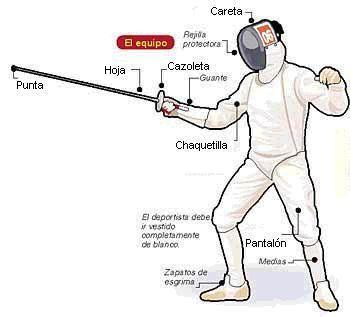What is
Fencing is a combat sport in which contestants (fencers) use melee weapons (foil, saber and sword) to attack and defend.
History of Fencing
Reports from the practice of fencing back the sixteenth century. There are reports of this era in European manuscripts, showing the sport. In France, the period of absolutism (seventeenth and eighteenth centuries), there were competitions struggles with the use of sabers and swords. In 1896, the Olympic Games in Athens, fencing was part of the framework of sports. The practice of fencing arrived in Brazil during the Imperial period. Already in the early twentieth century, military Rio de Janeiro adopted the practice of swordsmanship during training.
Rules (points, weapons and equipment)
- A fight fencing lasts for three rounds, each of which lasts for three minutes.
Three are used in fencing weapons: foil, saber and sword. The Sword and foil, measuring 1.10 m, may be used in fighting an opponent to reach only with part of the tip. The fencer earns points, when it touches the opponent's torso region with foil. The sword can be used to reach any part of the opponent's body. Already the saber (up to 1.05 meters) could be used to achieve, with the tip or blade, the waist region or above.
Each time a fencer touches the opponent's vest point is marked electronically, via sensors. Win the fight, the fencer who add more points.
The fencers wear special clothes for combat, in order to avoid injury. Metallic mask, gloves and protective vests are mandatory equipment for men. Besides these facilities, women also wear protective for the breasts.
Lane (site of the fighting)
The track has fencing of 1.5 m to 2 m wide and 14 m long. There is a line that divides the lane into two equal sides. At the bottom of each side there is an area (from 1.5 m to 2 m) in which the fencer attack can not enter.
Fencing Competitions
- The most important competition of the fencing occurs during the Olympics. This sport, for both men and women, was part of the 2012 London Olympics.
- Another very important competition is the World Fencing Championship, held every year (except in years when there are Olympic Games).
Benefits of fencing
- Increased strength, balance and bodily skills;
- Improved muscular endurance;
- Improved the speed of thought, reasoning and decision making;
- Development of motor coordination;
- Development of power concentration.
Confederations and Federations
- The FIE (International Fencing Federation) conducts competitions and events internationally. In Brazil, CBE (Brazilian Confederation of Fencing) organizes national championships.
Curiosities:
- Currently, the major world powers of fencing are: Italy, South Korea and China. Italy won 7 medals in the sport at the Olympics in London 2012. There were 3 gold, 2 silver and 2 bronze.
- The fencing was present in all editions of the Olympic Games of the modern era, ie since 1896.
- The main fencing competition worldwide is the Fencing World Championship. In 2012, the event will take place in Kiev (Ukraine), between the 14th and 15th of April. It will be a championship with only modalities that will not be played in the Olympics in London 2012.















